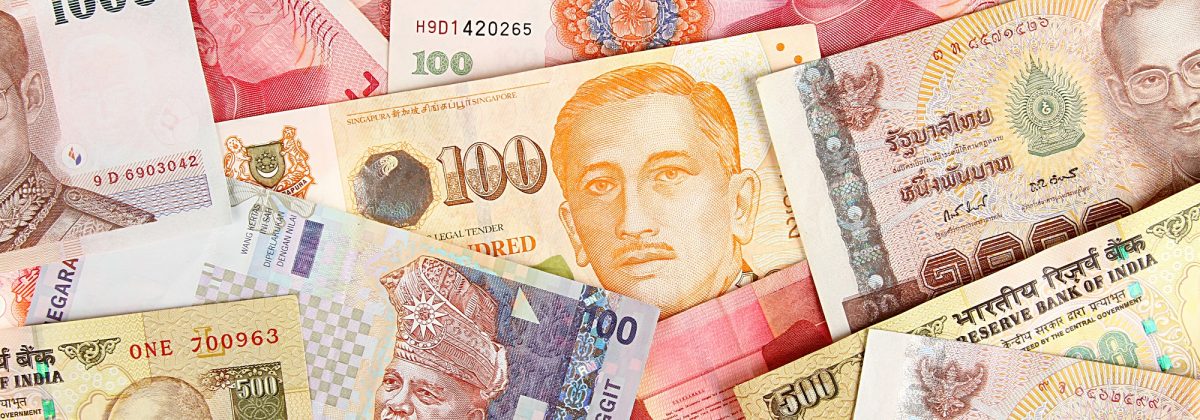The escalating trade war between the US and China is hurting the global economy. Investor confidence is suffering, especially with regards to smaller US companies, while trade is crippled for the export-oriented economies of Europe and South America.
On September 1, 2019, the US imposed fresh tariffs of 15% on Chinese goods, such as clothing, tools and electronics, to which China retaliated by issuing fresh tariffs on US exports of crude oil, pharmaceuticals and soybeans. President Trump has already threatened the use of his emergency powers to pull US companies out of China, if the need arises.
As the world’s two largest economies continue to impose higher and higher tariffs on each other’s goods, other countries are being drawn into this war, with both negative and positive effects.
South-East Asian Countries Could Benefit from the Trade War
Tariffs have a habit of shifting trade, more than disrupting it. Importers in China and the US are looking for alternative suppliers, which could open up new opportunities for third-party exporter markets. Mexico, for one, stands to gain from the US-Mexico-Canada agreement, facilitating auto imports to the US. Europe’s agricultural exports to China could also increase, with US produce becoming expensive for China.
Experts, however, seem more excited about the impact on the South East Asian economies, which are likely to absorb much of the manufacturing activities that move out of China. Trade diversion and inflow of foreign capital into these regions could further lead to economic benefits for the ASEAN economies.
Even before the trade war started, firms had already been diversifying their export manufacturing into these countries and out of China. The rising labour and land costs in China and a growing awareness of risks associated with excessive concentration of production supply in one country have also played a role in this. The trade war might only fuel this trend.
Let’s look at 5 major Asian economies that could emerge as winners in the global trade war.
1. Vietnam
A report by Japanese investment bank, Nomura Securities, predicts that Vietnam is poised to gain product orders diverted from China, worth 7.9% of its GDP. Many products, like electric apparatus for phones, parts of office and automated data processing machines, will be manufactured and exported from this country. China-based wireless earphone maker, GoerTek, has recently expressed its intention to move its manufacturing of Apple iPods to Vietnam, for an investment of $260 million. The country has strong investment promotion policies and new special economic zones, which can make it a potential site for ICT investments.
Exports from Vietnam to the US surged 36% in the first 5 months of 2019, in comparison to the same period in 2018. Officials believe that Vietnam’s GDP will grow 6.6% to 6.8% in 2019.
2. Malaysia
Along with Vietnam, Malaysia might also gain from this long-standing conflict, particularly in low-end manufacturing of ICT products, such as intermediate components of consumer goods like laptops. Major electronics companies like Dell (USA), Sony and Panasonic (Japan), have existing plants in the country. These companies will be able to re-deploy production and investment quite smoothly. Malaysia has robust road, rail and port infrastructure, which will help with strong local logistics and shipping networks. A clear and stable system of corporate laws will further strengthen its prospects.
Presence of more than 800 auto component manufacturers, including a diversified export network, will be a big advantage for Malaysia. Overall, the country stands to gain over 1.5% in GDP in 2019.
3. Thailand
Thailand is a top source for Chinese imports like office machinery, gold, oil, electronic equipment and automotive products. With regard to relocation of export-oriented ICT manufacturing, the country stands to gain the most. The Thai government’s industrial upgrading policies, such as the creation of the Eastern Economic Corridor, special economic zone and the Industry 4.0 programme, have already started bearing fruit. In 2017, Thailand exported electronic goods worth $35.6 billion.
The main focus is the auto parts manufacturing sector, where it is already an important regional manufacturing hub. Over half of this production is exported, helped by diversified trade links with the US, Japan and other ASEAN countries. If the trade war escalates, a number of producers in Thailand will be able to score over their Chinese counterparts for exports to the US. Plus, major companies, like BMW and Mercedes Benz, already have a base here. These companies will increase their local output to increase shipments to China.
4. Indonesia
Indonesia is the largest passenger car market in the ASEAN region, and has a strong presence in the auto parts exports segment. It will also gain some benefits from the relocation of export-oriented ICT manufacturing. There is also scope for the apparel sector in the country, but with antiquated technologies and under-investment in the sector, experts are not too hopeful.
Analysts believe that there has to be some re-thinking on several strategies by Jakarta. The first step could be regional trade agreements with other countries. Inflow of foreign capital investment needs to grow, to keep Indonesia’s exchange rate stable. The country has a current account deficit of 2.5% to 3% of its GDP as of 2019.
5. India
The export-oriented ICT manufacturing segment is still underdeveloped in India, but the nation has an advantageous position in the readymade garments sector. Although Bangladesh and Vietnam are already strong garment production centres, it is highly likely that they won’t be able to meet future production demands of China. India’s industrial sector has the advantage of integration of production processes, especially for apparel manufacturing. Also, it is a major producer of cotton and doesn’t depend on the import of raw materials in that regard. However, its outdated labour laws could act as a deterrent to such growth.
Unfortunately, the South East Asian economies are riddled with problems like political instability, poor infrastructure and logistics networks, and rising business costs. China’s recent currency manipulation is also becoming a source of fear for these economies. In May 2019, the US Treasury Department added 9 countries, including Vietnam, Malaysia and Singapore, to its watch list for currency manipulation. If any of these countries are found guilty, they will be barred from procuring US-based company contracts.
Reference Links
Start Trading in 3 easy steps
1
Complete the Application Form
It takes just minutes for us to verify your identity and set up your account.
2
Download MT4 Platform
Download MT5 and trade via your desktop, mobile or tablet. No minimum deposit required.
3
Start Trading
Trade more than 60 products (Forex, CFDs & Commodities)





